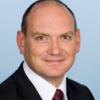According to results published in the British Journal of Cancer scientists have identified that an ‘electronic nose’ can distinguish between molecules found in the breath of head and neck cancer patients and those who are healthy.
Researchers from Technion, the Israel Institute of Technology collected breath samples from 82 people from three different groups; head and neck cancer patients, lung cancer patients and healthy people. A specific detector called the Nano Artificial Nose, was used to examine the difference in the molecules present in the exhaled breath in all three groups.
The study found that the electronic nose detector was able to distinguish between the molecules found in the breath of head and neck cancer patients, lung cancer patients and healthy people.
Professor Hossam Haick, the lead researcher said, "There's an urgent need to develop new ways to detect head-and-neck cancer because diagnosis of the disease is complicated, requiring specialist examinations. We've shown that a simple 'breath test' can spot the patterns of molecules which are found in head-and-neck patients in a small, early study. We now need to test these results in larger studies to find if this could lead to a potential screening method for the disease."
Mr Francis Vaz, Head and Neck Surgeon at the Harley Street Clinic comments, 'More and more we are seeing an increase in early diagnosis from breath tests and optical diagnostic tests through to genetic markers for Head and Neck Cancer. What is essential is to demonstrate sensitivity and specificity for tests in order that they are reliable and quite specific for the disease so we can use them to diagnose cancers quickly. I am eager to support the development of these tests as long as they are undertaken on large numbers and show appropriate sensitivity and specificity for the disease in question.'
Head-and-neck cancer is often diagnosed late, because it lacks specific symptoms and patients often develop a second primary tumour that can affect the entire respiratory system, including the lungs. Every year around 8,700 people are diagnosed with head and neck cancer within the UK, which can include tumours in the salivary glands and mucus membranes.


